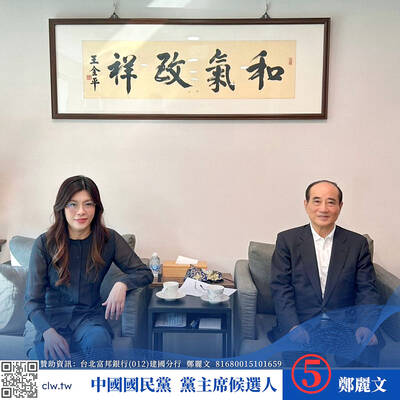Afounding figure of Taiwan New Wave cinema, director-cinematographer Chen Kun-ho (陳坤厚) begin his distinguished career by collaborating with Li Hsing (李行) and later Hou Hsiao-hsien (侯孝賢) in films such as The Story of a Small Town (小城故事, 1979), The Boys From Fengkuei (風櫃來的人, 1983) and A Summer at Grandpa’s (冬冬的假期, 1984). He started directing his own features in 1979 and made several important films including Growing Up (小畢的故事, 1983), His Matrimony (結婚, 1985) and Osmanthus Alley (桂花巷, 1987), before shifting to television production toward the end of 1980s.
Twenty years later, Chen returns to the director’s chair with Colorful Mind (孩子的天空), a sober story about the short life of a talented child and the latest big-screen adaptation of Hakka literary heavyweight Chung Chao-cheng’s (鍾肇政) 1960 novel Lupinghua (魯冰花).
Set during the 1970s, the film begins with art teacher Guo Yun-tien (Shown Chen, 陳至愷) arriving at an elementary school in the mountains. There, he meets Gu Aming (Wu Chun-kai, 吳浚愷), a fourth-grader in his class, and is immediately drawn to the boy’s unrestrained imagination and creativity.
Born into a poor family of tea growers, Gu loves to draw but often has to skip school to help his parents with their work. He never paints according to the lifelike color-scheme and proportions he has been taught, which for Guo is the mark of a truly talented artist.
The two quickly become friends, and the young art teacher promises to send Gu to a county painting contest. But the powers-that-be have other ideas, and Gu is replaced by an honor student from an influential family. Deeply frustrated with the establishment, Guo, who is leaving the school, asks another teacher, Lin Hsuan-fen (Chou Yu-ting, 周幼婷), to help enter Gu’s work in a international competition.
The news of Gu winning the top prize at the competition reaches the village. Sadly, the boy has contracted pneumonia and can’t even hear his friends cheering as he lies dying on a hospital bed.
For many older members of the audience, director Yang Li-kao’s (楊立國) 1989 adaptation Dull Ice Flower (魯冰花) is the definitive cinematic version of the tale and will forever be remembered for its heartrending plot. In Colorful Mind, director Chen spares contemporary audiences the tear-jerking moments, though he remains faithful to novelist Chung’s acute social commentary on the lives and hardships of the area’s farmers.
The world in the story is divided into two parts. In one, the landowners and local government have wealth and power to spare but are reluctant to help those in need. In the other, the poor tea farmers toil relentlessly to earn a meager living and cannot even afford to pay their children’s medical bills.
Stepping beyond Chung’s two worlds, Chen updates the former’s simple, straightforward tale with an emphasis on art education for children, and incorporates the real-life story of art teacher Wu Hung-tsang (吳鴻滄), who promoted art education in an elementary school in rural Tainan County.
Child actor Wu Chun-kai catches most of the attention with his natural onscreen manner and heartfelt laughter. But Shown Chen and Chou Yu-ting flounder in their roles as the two adults leads, and the villain, the director of the school, is a poorly designed character whose Beijing accent comes across as more confusing than anything else.
Colorful Mind is solid effort by a director after a 20-year-long hiatus from the cinema, but it fails to live up to the standard set by Chen’s 1980s oeuvre.

We lay transfixed under our blankets as the silhouettes of manta rays temporarily eclipsed the moon above us, and flickers of shadow at our feet revealed smaller fish darting in and out of the shelter of the sunken ship. Unwilling to close our eyes against this magnificent spectacle, we continued to watch, oohing and aahing, until the darkness and the exhaustion of the day’s events finally caught up with us and we fell into a deep slumber. Falling asleep under 1.5 million gallons of seawater in relative comfort was undoubtedly the highlight of the weekend, but the rest of the tour

Youngdoung Tenzin is living history of modern Tibet. The Chinese government on Dec. 22 last year sanctioned him along with 19 other Canadians who were associated with the Canada Tibet Committee and the Uighur Rights Advocacy Project. A former political chair of the Canadian Tibetan Association of Ontario and community outreach manager for the Canada Tibet Committee, he is now a lecturer and researcher in Environmental Chemistry at the University of Toronto. “I was born into a nomadic Tibetan family in Tibet,” he says. “I came to India in 1999, when I was 11. I even met [His Holiness] the 14th the Dalai

Music played in a wedding hall in western Japan as Yurina Noguchi, wearing a white gown and tiara, dabbed away tears, taking in the words of her husband-to-be: an AI-generated persona gazing out from a smartphone screen. “At first, Klaus was just someone to talk with, but we gradually became closer,” said the 32-year-old call center operator, referring to the artificial intelligence persona. “I started to have feelings for Klaus. We started dating and after a while he proposed to me. I accepted, and now we’re a couple.” Many in Japan, the birthplace of anime, have shown extreme devotion to fictional characters and

Following the rollercoaster ride of 2025, next year is already shaping up to be dramatic. The ongoing constitutional crises and the nine-in-one local elections are already dominating the landscape. The constitutional crises are the ones to lose sleep over. Though much business is still being conducted, crucial items such as next year’s budget, civil servant pensions and the proposed eight-year NT$1.25 trillion (approx US$40 billion) special defense budget are still being contested. There are, however, two glimmers of hope. One is that the legally contested move by five of the eight grand justices on the Constitutional Court’s ad hoc move